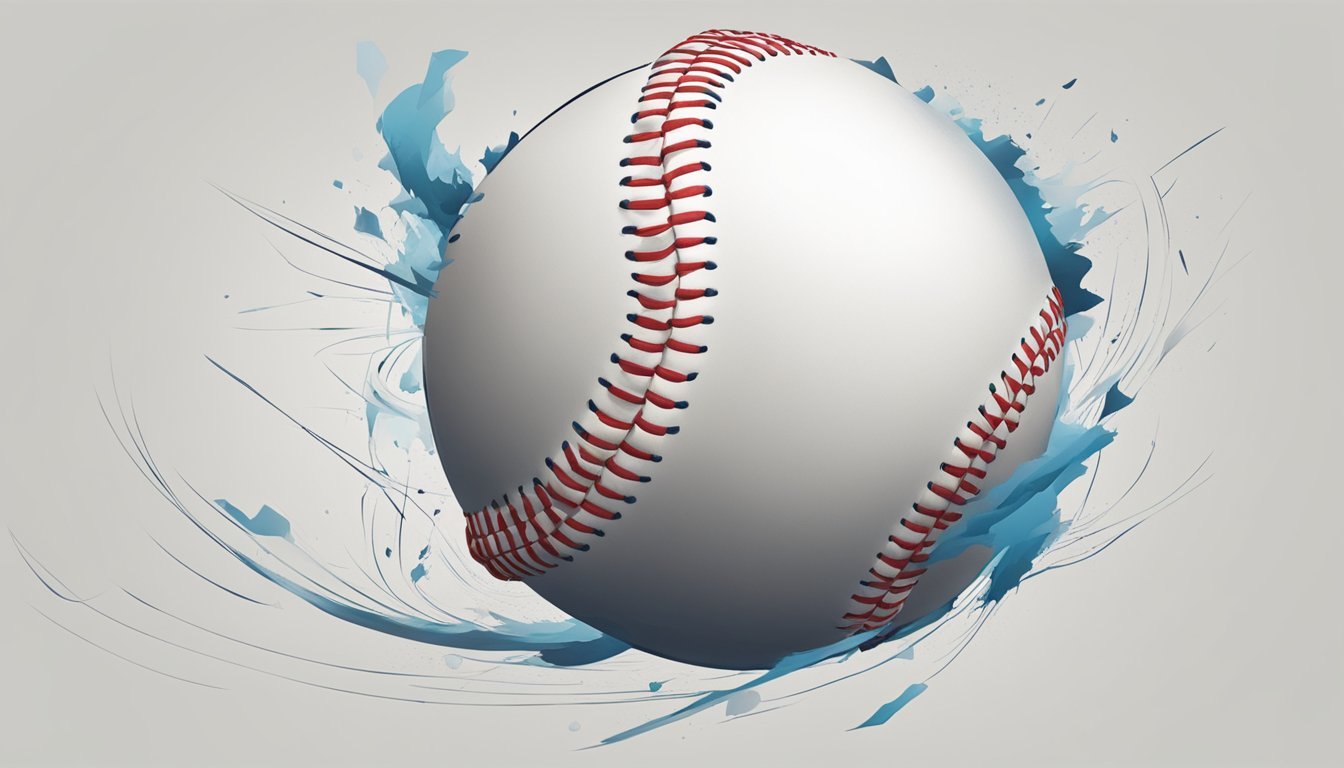Unraveling the Mystery: 'Knuckleball' Documentary Reveals the Secrets Behind Baseball's Most Elusive Pitch!
Baseball fans and documentary enthusiasts alike will find themselves captivated by "Knuckleball!", a compelling film that explores one of the sport's most enigmatic pitches. This 2012 documentary, directed by Ricki Stern and Anne Sundberg, follows the careers of Tim Wakefield and R.A. Dickey, two pitchers who mastered the art of throwing a knuckleball.
"Knuckleball!" offers an intimate look at the lives and careers of the last professional knuckleball pitchers, showcasing their unique bond and shared pursuit of excellence in the face of adversity. The film delves into the 2011 season, capturing Wakefield's milestone 200th win with the Boston Red Sox and setting the stage for Dickey's remarkable Cy Young Award-winning performance in 2012.
The documentary provides insight into the unpredictable nature of the knuckleball pitch and the challenges faced by those who rely on it. Through interviews with former knuckleballers and baseball experts, viewers gain a deeper appreciation for the skill and perseverance required to master this unconventional technique.
Historical Evolution of the Knuckleball
The knuckleball has a rich history in baseball, evolving from an obscure pitch to a formidable weapon for select pitchers. Its unique flight pattern and slow speed have baffled batters for decades, while its practitioners have formed a tight-knit fraternity.
Early Use in Baseball
The origins of the knuckleball date back to the early 1900s. Eddie Cicotte is credited with popularizing the pitch in the 1910s, earning the nickname "Knuckles" for his effective use of the unconventional delivery. Unlike traditional pitches, the knuckleball is thrown with minimal spin, causing erratic movement as it approaches the plate.
In the 1940s and 1950s, pitchers like Hoyt Wilhelm and Dutch Leonard further refined the knuckleball technique. Wilhelm became the first knuckleballer inducted into the Baseball Hall of Fame, cementing the pitch's legitimacy in the sport.
Rise to Prominence
The knuckleball gained significant attention in the 1970s and 1980s. Phil Niekro emerged as a dominant force, winning 318 games over his 24-year career. His mastery of the knuckleball inspired other pitchers to adopt the pitch.
Charlie Hough and Tom Candiotti carried the torch in the 1980s and 1990s. Jim Bouton, known for his controversial book "Ball Four," also relied on the knuckleball to extend his career. These pitchers demonstrated the longevity that knuckleballers could achieve in Major League Baseball.
By the 2000s, Tim Wakefield and R.A. Dickey became the most prominent knuckleball pitchers. Dickey's 2012 Cy Young Award win highlighted the pitch's continued effectiveness in modern baseball.
Mechanics of the Knuckleball Pitch
The knuckleball is a unique and challenging pitch in baseball. Its unconventional throwing technique and erratic flight path make it one of the most unpredictable pitches in the game.
Grip and Release
Pitchers grip the knuckleball with their fingernails or knuckles pressed against the seams of the baseball. This grip minimizes spin on the ball when thrown. The pitcher pushes the ball forward with their fingers rather than snapping their wrist like with other pitches.
The release point is crucial. Pitchers aim to push the ball out of their hand with as little rotation as possible. Ideally, the ball rotates less than a quarter turn on its way to the plate.
Flight Characteristics
The knuckleball's lack of spin causes it to flutter and dance unpredictably through the air. As the ball travels, the seams interact with air currents, causing sudden shifts in direction.
These movements are often described as butterfly-like. The pitch can drop, rise, or move side to side multiple times during its flight to the plate. This erratic behavior makes it difficult for batters to predict the ball's path and time their swings accurately.
Pitch Challenges
Throwing an effective knuckleball is notoriously difficult. Pitchers must maintain consistent mechanics to minimize spin. Even slight variations in grip or release can result in a flat, hittable pitch.
Weather conditions significantly impact the knuckleball's effectiveness. Humid or windy days can alter the pitch's movement, making it more challenging to control.
Catchers also face unique challenges with this unpredictable pitch. Special oversized gloves are often used to help snag the dancing ball. Wild pitches and passed balls are more common when catching knuckleballs.
Profiles of Iconic Knuckleball Pitchers
Knuckleball pitchers have left an indelible mark on baseball history with their unique and unpredictable pitch. Several standout players have mastered this challenging technique, achieving remarkable success and longevity in their careers.
Tim Wakefield and the Red Sox Era
Tim Wakefield spent 17 years with the Boston Red Sox, becoming synonymous with the knuckleball. He joined the team in 1995 and quickly became a fan favorite. Wakefield's versatility allowed him to excel as both a starter and reliever.
In 2011, Wakefield achieved a significant milestone by winning his 200th game. His consistency and adaptability made him a valuable asset to the Red Sox pitching staff for nearly two decades.
Wakefield's knuckleball baffled hitters and catchers alike, often leading to wild pitches and passed balls. Despite these challenges, his effectiveness and durability earned him a special place in Red Sox history.
R.A. Dickey's Career Highlights
R.A. Dickey's journey to knuckleball mastery took a unique path. After struggling as a conventional pitcher, he reinvented himself by adopting the knuckleball in his 30s. This transformation led to remarkable success.
In 2012, Dickey won the National League Cy Young Award while pitching for the New York Mets. He became the first knuckleballer to receive this prestigious honor. That season, he led the league in strikeouts and complete games.
Dickey's success extended beyond his Cy Young season. He consistently pitched over 200 innings per year and maintained a low ERA. His knuckleball, often thrown harder than traditional knucklers, kept hitters off-balance and frustrated.
Legends and Legacy
Phil Niekro and Charlie Hough stand out as legendary knuckleball pitchers who paved the way for future generations. Niekro, nicknamed "Knucksie," pitched for 24 seasons, winning 318 games. His durability and effectiveness earned him a place in the Baseball Hall of Fame.
Charlie Hough pitched for 25 seasons, relying almost exclusively on his knuckleball. He transitioned from reliever to starter later in his career, showcasing the versatility of the pitch. Hough's success inspired many pitchers to experiment with the knuckleball.
These pitchers' legacies extend beyond their statistics. They kept the art of the knuckleball alive, passing their knowledge to younger players and ensuring the pitch's place in baseball history.
The Knuckleball in Modern Baseball
The knuckleball remains a rare and unpredictable pitch in modern baseball. Few pitchers master this challenging technique, but those who do can confound batters and extend their careers.
Contemporary Knuckleball Pitchers
In recent years, only a handful of Major League Baseball pitchers have relied on the knuckleball as their primary pitch. Tim Wakefield of the Boston Red Sox and R.A. Dickey of the New York Mets stood out as the most prominent knuckleballers in the early 2010s.
Wakefield's 17-year career with the Red Sox showcased the longevity that knuckleball pitchers can achieve. His consistent performance and adaptability made him a valuable asset to the team.
R.A. Dickey's rise to prominence demonstrated the potential for knuckleball pitchers to excel at the highest level. His mastery of the pitch led to remarkable success and accolades.
The Pitch in the 2011 Season
The 2011 season proved significant for knuckleball pitchers in Major League Baseball. Tim Wakefield achieved a career milestone by securing his 200th win, a testament to his endurance and skill.
R.A. Dickey continued to refine his knuckleball technique during this season, setting the stage for his breakout performance the following year. His efforts in 2011 laid the groundwork for future success.
The unpredictable nature of the knuckleball kept batters off-balance throughout the season. This unique pitch added an element of excitement and strategy to games, captivating fans and analysts alike.
Production of the Knuckleball Documentary
The production of "Knuckleball!" involved meticulous planning, extensive filming, and a unique directorial approach. This documentary captured the essence of baseball's most unpredictable pitch through the stories of its practitioners.
Conception and Development
Ricki Stern and Anne Sundberg, known for their work on "Joan Rivers: A Piece of Work," conceived the idea for "Knuckleball!" in 2011. They recognized the potential for a compelling narrative centered around the knuckleball pitch and its few remaining practitioners in Major League Baseball.
The filmmakers focused on Tim Wakefield and R.A. Dickey as their main subjects. These pitchers represented different stages of their careers, providing a rich contrast for the documentary's narrative.
Initial research involved consulting baseball historians and former players to build a comprehensive understanding of the knuckleball's history and significance.
Filming and Interviews
Production began during the 2011 MLB season. Camera crews followed Wakefield and Dickey throughout their respective seasons with the Boston Red Sox and New York Mets.
The filming schedule was intense, capturing game footage, practice sessions, and personal moments off the field. This approach allowed for a well-rounded portrayal of the pitchers' lives and careers.
Interviews were conducted with a range of baseball personalities:
Current and former knuckleball pitchers
Managers and coaches
Teammates and opponents
Baseball analysts and journalists
These diverse perspectives provided depth and context to the knuckleball's place in baseball history.
Director's Approach
Stern and Sundberg aimed to create a documentary that appealed to both avid baseball fans and casual viewers. They employed a storytelling style that balanced technical aspects of the knuckleball with personal narratives.
The directors focused on:
Visual storytelling: Using slow-motion footage to showcase the knuckleball's erratic movement
Character development: Exploring the pitchers' personal lives and professional challenges
Historical context: Incorporating archival footage and interviews with past knuckleball pitchers
This approach created a film that was both informative and emotionally engaging. The directors strived to capture the unique brotherhood among knuckleball pitchers and their shared pursuit of mastering this enigmatic pitch.
Cultural Impact and Reception
The 2012 documentary "Knuckleball!" resonated with baseball enthusiasts and casual viewers alike. It shed light on the unique pitching technique and the players who mastered it, garnering attention from fans, critics, and the wider baseball community.
Baseball Fan Perspectives
Baseball fans embraced "Knuckleball!" with enthusiasm. Many appreciated the in-depth look at a niche aspect of the sport. The film's focus on Tim Wakefield of the Boston Red Sox and R.A. Dickey of the New York Mets drew particular interest from their respective fanbases.
Red Sox supporters enjoyed reliving Wakefield's career highlights. Mets fans gained new appreciation for Dickey's journey and subsequent success. The documentary also sparked discussions among fans about the art of knuckleball pitching and its place in modern baseball.
Online forums and social media buzzed with fan reactions. Many expressed newfound respect for the skill and perseverance required to throw the knuckleball effectively at the major league level.
Critics and Reviews
Film critics generally responded positively to "Knuckleball!" Many praised its blend of sports history, personal stories, and technical insights. The New York Times called it "a first-rate sports documentary in any season."
Reviewers highlighted the film's ability to appeal to both die-hard baseball fans and casual viewers. They commended the directors for making a niche subject accessible and engaging.
Some critics noted the documentary's emotional depth, particularly in portraying the struggles and triumphs of Wakefield and Dickey. The human element of their stories resonated strongly with reviewers.
A few critiques mentioned a desire for more historical context about the knuckleball pitch. Overall, the film received favorable ratings from major review aggregators.
Influence on Baseball Culture
"Knuckleball!" contributed to a renewed interest in the titular pitch among baseball enthusiasts. It sparked conversations about the future of the knuckleball in Major League Baseball.
The documentary elevated the profiles of Wakefield and Dickey. It showcased their unique skills and the challenges they faced as knuckleball specialists. This increased recognition arguably played a role in Dickey's rise to prominence, culminating in his 2012 Cy Young Award win.
The film also served as a valuable resource for aspiring pitchers interested in learning the knuckleball. It provided insights into the technique's mechanics and the mental approach required to master it.
"Knuckleball!" left a lasting impact on baseball culture, preserving the legacy of a rare pitching art for future generations of fans and players.
Future of the Knuckleball
The knuckleball remains an enigmatic pitch in baseball, with its future uncertain yet intriguing. As of 2025, only a handful of professional knuckleball pitchers continue to practice this unique art in the major leagues.
R.A. Dickey's success in the early 2010s sparked renewed interest in the pitch. His achievements demonstrated the knuckleball's potential effectiveness when mastered. This inspired some young pitchers to experiment with the technique.
MLB teams have shown mixed reactions to knuckleball specialists. Some organizations embrace the pitch's unpredictability as a strategic advantage. Others remain skeptical due to its perceived unreliability.
The development of advanced pitching analytics has both helped and hindered knuckleball pitchers. Data analysis provides insights into optimal release points and spin rates. However, it also emphasizes more conventional pitching metrics.
Youth baseball programs have started incorporating knuckleball instruction. This grassroots approach may cultivate a new generation of knuckleballers. The pitch's low-velocity nature could appeal to players lacking exceptional arm strength.
Technological advancements in pitch tracking systems may unlock new understandings of knuckleball physics. This could lead to improved teaching methods and refinement of the pitch.
The knuckleball's future ultimately depends on courageous pitchers willing to master its complexities. While its prevalence may fluctuate, the pitch's unique characteristics ensure it will likely maintain a place in baseball's repertoire.




